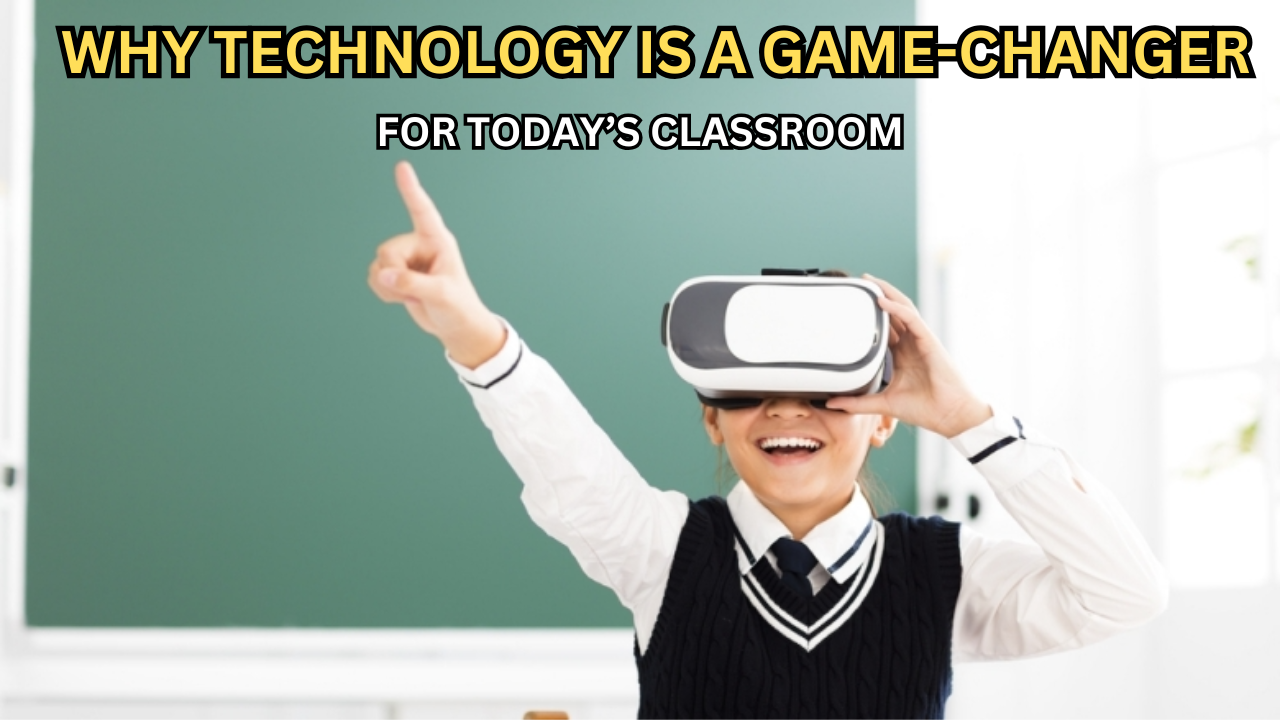In today’s fast-paced world, technology has revolutionized every aspect of life, and education is no exception. The classrooms of the past, filled with blackboards, chalk, and rows of desks, are now evolving into dynamic, tech-driven learning hubs. This transformation isn’t just about gadgets and tools but about reshaping how students learn and teachers teach. Let’s explore why technology is crucial in modern classrooms and how it transforms education.
Bridging the Past and Present: The Evolution of Classrooms:
Decades ago, education was limited by the resources available in physical classrooms. The introduction of personal computers in schools during the 90s was a game-changer, albeit limited to a few institutions. Fast forward to today, and technology has become an integral part of education. From smart boards replacing whiteboards to students using tablets instead of notebooks, the classroom experience has undergone a massive transformation.
One notable shift is the integration of the Internet into learning. While the 90s kids relied on resources like Encarta Encyclopedia, today’s students have access to an ocean of information at their fingertips. The internet has made education accessible and interactive, enabling students from diverse backgrounds to access quality learning materials.
Transforming Teaching Methods:
Technology has empowered teachers to make their lessons more engaging and effective. Smart boards, multimedia presentations, and virtual reality tools have added an element of interactivity to traditional teaching. For instance, a history lesson can come alive through 3D models of ancient civilizations, making learning immersive and memorable.
Additionally, digital tools like ChatGPT and other AI-driven platforms are changing the way educators approach teaching. ChatGPT, for example, helps students find instant answers to complex questions, streamlining research and learning processes. These advancements make learning more personalized and adaptive to individual needs.
Preparing Students for the Future:
The future job market will be heavily influenced by advancements in technology. Skills like coding, artificial intelligence (AI), and data analytics are becoming the foundation of many careers. Schools are adapting by offering programs in robotics, AI, and the Internet of Things (IoT) to prepare students for these future opportunities.
Python, a programming language, is a prime example of how essential tech skills have become. Once reserved for specialized fields, Python is now considered as fundamental as math or science. It’s a gateway to mastering AI, machine learning, and data science, skills that are not only in demand but are reshaping industries globally.
The Role of AI in Education:
Artificial intelligence is revolutionizing education in profound ways. Tools like ChatGPT exemplify how AI can streamline the learning process. Beyond answering queries, AI can help create personalized learning experiences by analyzing a student’s strengths and weaknesses. For example, AI-powered platforms can recommend tailored lessons to improve a student’s performance in specific subjects.
Moreover, AI is helping teachers manage administrative tasks, giving them more time to focus on teaching. With AI, educators can grade assignments, track student progress, and even predict learning outcomes, making classrooms more efficient.
Web 3.0 and the Next Phase of Education:
The evolution of the internet, from Web 2.0 to Web 3.0, is paving the way for a new era in education. Web 2.0, is characterized by social media and user-generated content, and has already democratized learning. Web 3.0 promises even more. With blockchain technology ensuring secure digital credentials and the metaverse creating immersive learning environments, the future of education is boundless.
For instance, virtual classrooms in the metaverse can provide students with real-world simulations, enhancing their understanding of complex subjects. Imagine studying astronomy while exploring a 3D model of the solar system, the possibilities are endless.
Challenges and Opportunities:
While the integration of technology into classrooms brings numerous benefits, it’s not without challenges. The digital divide remains a significant hurdle, with many students lacking access to devices and the internet. Additionally, over-reliance on technology can sometimes detract from fundamental skills like critical thinking and problem-solving.
However, these challenges also present opportunities for innovation. Schools and governments can work together to bridge the digital gap by providing affordable devices and internet access. Educators can strike a balance by integrating technology with traditional teaching methods to ensure holistic learning.
Conclusion:
Technology has undeniably transformed classrooms, making education more accessible, engaging, and future-ready. From AI tools like ChatGPT to the promise of Web 3.0, the possibilities are limitless. As we stand on the brink of a new era in education, it’s essential to embrace these advancements while addressing the challenges they bring. After all, the ultimate goal of technology in classrooms is not just to teach students but to inspire them to innovate, create, and lead in a rapidly changing world.
FAQs:
1. Why is technology important in classrooms?
It enhances learning, makes education accessible, and prepares students for the future.
2. How does AI help in education?
AI personalizes learning, assists teachers, and improves efficiency.
3. What is Web 3.0’s role in education?
It introduces secure credentials and immersive learning via blockchain and the metaverse.
4. What are the challenges of tech in classrooms?
The digital divide and over-reliance on technology are key challenges.
5. How can the digital divide be solved?
By providing affordable devices, internet access, and blended teaching methods.
6. How does technology prepare students for jobs?
It teaches essential skills like coding, AI, and data analytics for future careers.
